Blue and blue orchids: features and care
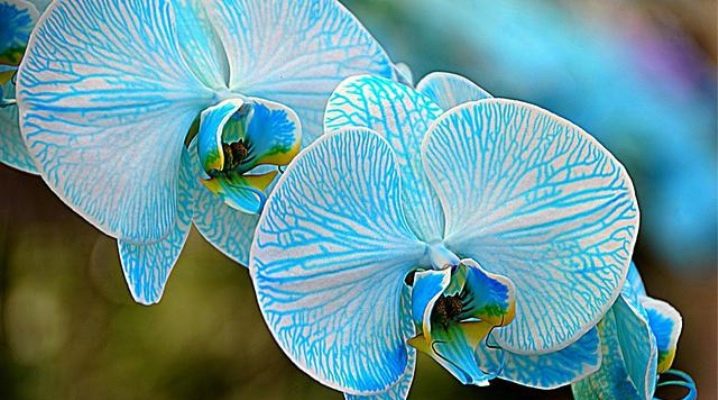
The color variety of orchids cannot leave anyone indifferent. Especially many amateurs dream of growing blue or blue orchids, such as in the showcase of the trendy flower department. Let's try to figure out whether this flower can really be considered a miracle of nature, and whether there are varietal blue or blue orchids.
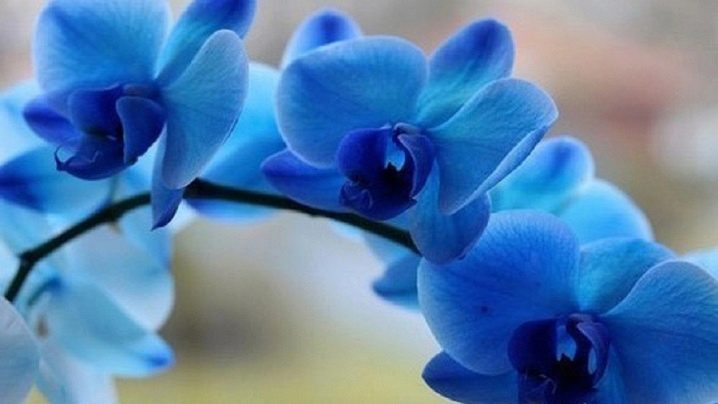
How did they come about?
The first blue orchid flower was shown at the Florida Tropical Flower Show by Silver Vase in 2011. Three months later, Geest Orchideeën presented its version. After that, the flower began to be demanded by the customers of flower shops. It should be noted that the representatives of Geest Orchideeën initially did not hide from those who were interested that the novelty was obtained by chemical dyeing and would regain its natural color during the flowering period. Until now, the secret of the dyeing technology, which turns a white flower into a blue one, has not been revealed. However, it is known that when coloring natural materials are used that do not have a detrimental effect on the plant.
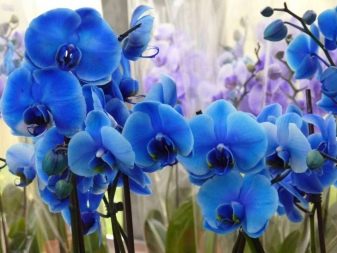

It turns out that blue and blue orchids are not hybrid or varietal species bred artificially, but only a successful PR move, and the pale blue or bright blue flowers are tinted. Abroad, this variety is used as the decoration of premises for celebrating an important event.
How to distinguish painted from real?
There is a difference between a real and a painted orchid. To distinguish between two flowers, pay attention to a number of criteria.
- A real flower has a stem of natural color without additional shades.
- Slide your finger over the petals. If there is a trace of paint on the skin, then it is a painted specimen.
- If the soil in which the plant is represented has a natural color, then this indicates that no attempt was made to paint the flower.
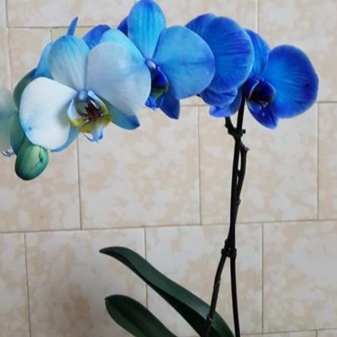
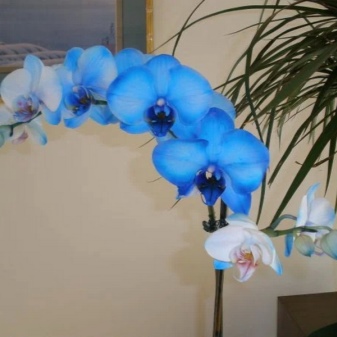
If you bought a painted blue orchid, then you should prepare for serious plant care. A flower that has been chemically attacked requires more attention and care.
How to make an orchid blue?
Currently, there are two known ways to give a white flower a blue tint at home. The least traumatic for the plant is staining through watering, although the result in this case is not so successful, since the natural color returns to the flower after watering is stopped. And also the disadvantage of this method is the coloring not only of the buds, but also of the stems. To achieve a blue color, dissolve the dye in water. Keep in mind that a large amount of the dye will give the flower a brighter color, but it will do quite a lot of harm to the plant. After that, the culture is watered in the same mode.

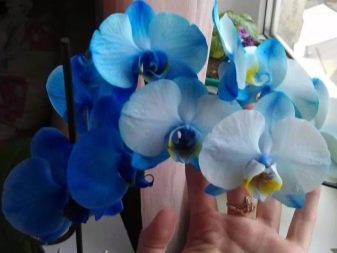
A more effective method is staining by injection. This must be done very carefully so that the flower undergoes as little stress as possible. Peduncle injections are recommended for minimal damage. Fill the syringe with the dye dissolved in water and insert the needle into the selected part. When staining in one way or another, follow the recommendations of specialists.
- The water with which the dye is combined should be at room temperature. Do not use boiled water, settled water is more suitable.
- To reduce the risk of flower disease when injecting, disinfect the ink injection needle.
- For coloring, give preference to chemicals that are sold in specialized flower or agricultural departments. It is allowed to use food coloring instead of special paint.
- You can paint an orchid by injection by inserting a needle into any part, but it is better to insert a syringe into the peduncle. The most traumatic option is the introduction of the drug into the roots.
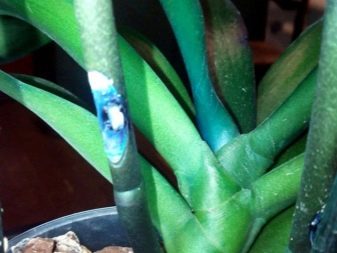
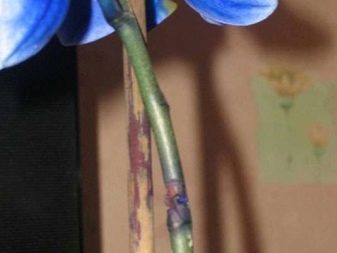
Whichever method is chosen, remember that any procedure is very dangerous for this delicate flower. Staining methods can even lead to the death of the culture. After coloring, the plant will require very gentle care. In addition, improperly performed manipulations can cause serious diseases. For example, if the roots or stem are damaged during the injection, pathogenic bacteria can enter. Therefore, after staining, regularly monitor the condition of the flower.

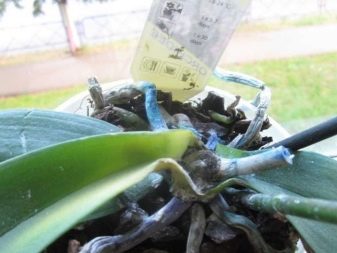
Varieties
For years, flower merchants have tricked buyers by selling them blue and blue orchids. Imagine the surprise of the new owner of the flower, when after flowering he assumed his natural color. And these are not the most negative consequences, since some specimens did not withstand chemical intervention at all and died. Currently, breeders have managed to breed several species, the color of which is close to blue. Hybrids belong to the orchid families such as Wanda, Cattleya, Phalaenopsis.

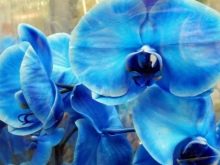

Phalaenopsis is more suitable for novice florists, this variety is developed for indoor care and is not picky in growing. This species includes, for example, the Dutch hybrid Phalaenopsis Royal Blue, but its blue color will not last long. And also in 2013, phalaenopsis species were bred under the name "Aphrodite" - this option is characterized by a real blue flowering, but the likelihood of such a specimen getting into a home flower collection is negligible.

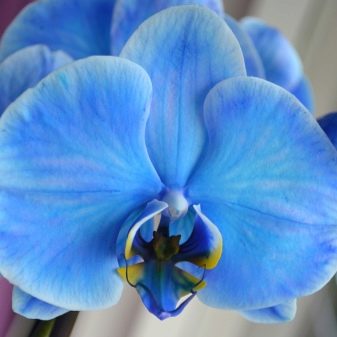
Another species, "Vanda blue", can be found in nature, but its color cannot be called purely heavenly. Vanda flowers have a bluish tint and specks. The least preferred option for amateurs, since the flower requires serious care and the creation of certain conditions for successful cultivation. Cattleya orchids are not as picky about conditions as wanda, although in their case certain care rules must be followed. In general, this variety with beautiful and large flowers takes root in the house.
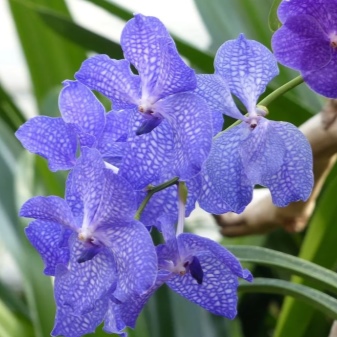
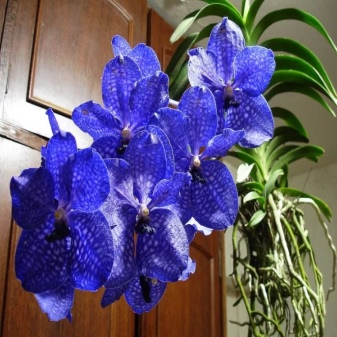
Conditions of detention
Orchids must be kept under special conditions.
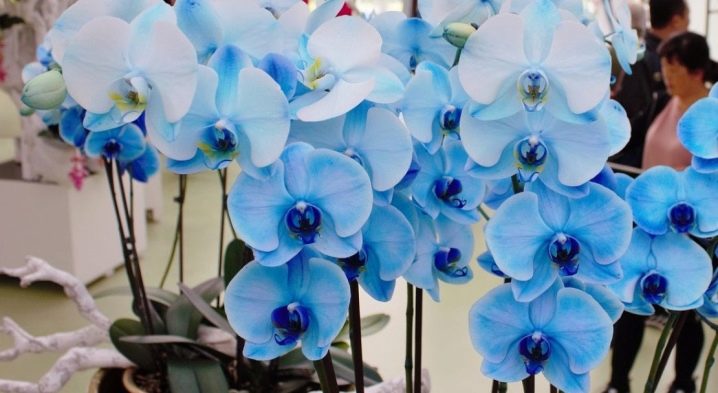
Lighting
The florist should attach particular importance to this criterion, since the development and vitality of any orchid depends on it. To determine the plant's need for light, you need to study the natural conditions of the species. In winter and summer, it is recommended to put the culture on the west side, in this case the owner of the flower frees himself from the obligation to carry out additional lighting. In addition, with this arrangement, the flower will avoid direct exposure to dangerous ultraviolet rays.
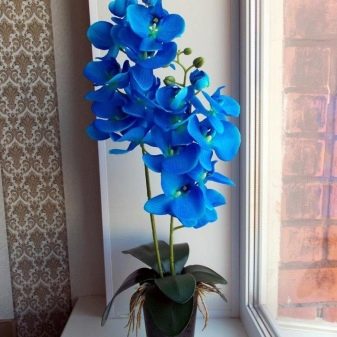
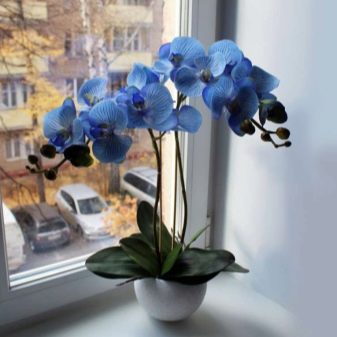
Another option for winter maintenance is the south side, at this time the sun's rays are not able to burn the plant. If the culture is in the southern part throughout the year, then it is necessary to regularly monitor the degree of soil drying and adjust the irrigation regime. The least preferred location for the blue variety is on the north side, but with artificial lighting, such as phytolamps, this location will not be a problem.
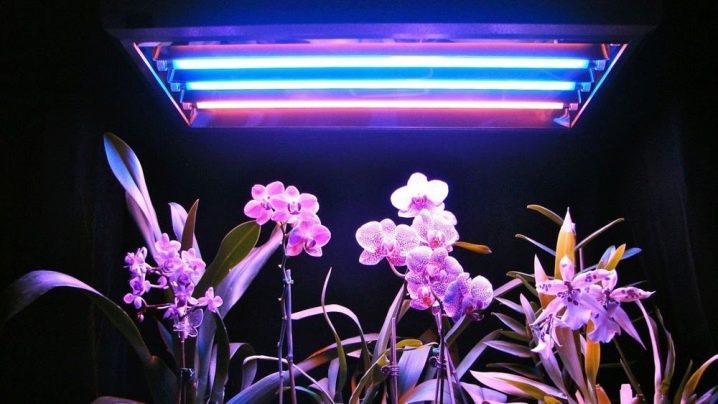
According to experienced florists, optimal daylight hours ensure the most frequent flowering. If there is not enough light, then the plant directs all the energy to the development of the leaves. It is possible to determine the deficit of light by the light shade of the foliage, and its inner side in this case does not have purple pigmentation.The duration of daylight hours for this culture is 12-16 hours, for immature or unhealthy specimens - up to 18 hours a day.

Too much light is also dangerous. The sun's rays are capable of provoking burns on the leaves of this fragile flower, therefore, the plant cannot be left in direct rays. It is necessary to maintain daylight hours in winter, if the owner wants to admire the lush flowering. If this is not necessary, then you can leave the flower before the daylight hours itself begins to increase in accordance with the season.
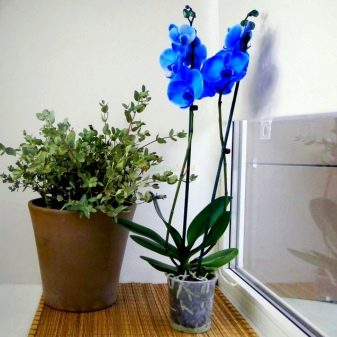
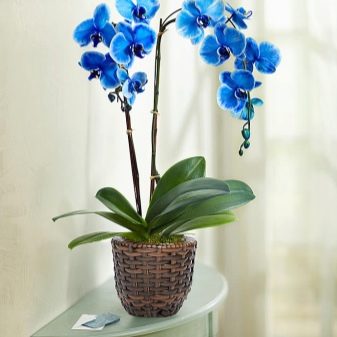
Temperature
If phalaenopsis is grown, then you should know that this is a thermophilic species, and therefore even the night temperature should not be lower than +18 degrees. Daily limits are 25.30 degrees above zero.
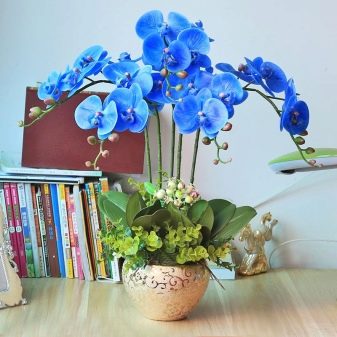
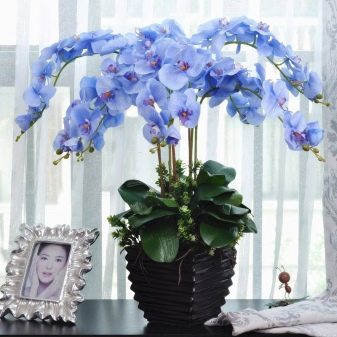
Failure to comply with the temperature regime threatens with serious diseases or the risk for the plant to be attacked by pests. Both low and too high temperatures lead to such consequences.
In order for the flower to actively grow and develop, it is required to observe daily temperature fluctuations, which should correspond to 8-10 degrees. And also when setting the mode, it is important to pay attention to the phase of the plant's life cycle. You can adjust the temperature based on the state of the flower itself. For example, during a dormant period, the room should be cooler than during an active growing season.

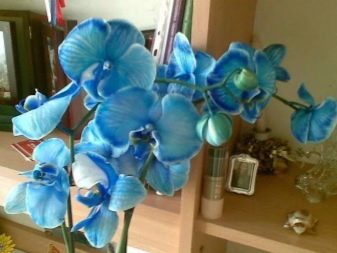
How to care?
Blue orchids require careful maintenance, proper watering and fertilization.
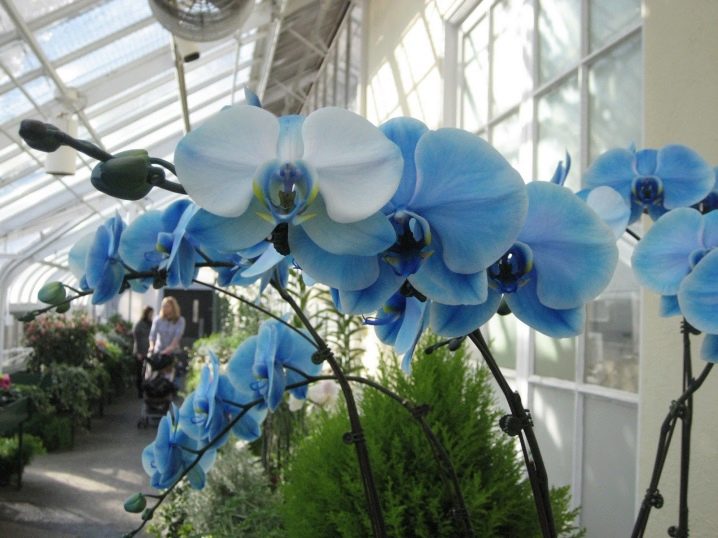
Top dressing
The flower loves to eat abundantly with minerals, and therefore it is required to fertilize the plant at least 2-3 times a month during the warm period. In autumn, the frequency of feeding can be reduced by 2 times, and in winter, it is enough to feed the specimen once a month. One caveat: nutrition on the root system is not enough, it is necessary that the fertilization process is carried out on the leaf as well. For this, special store mixes are suitable.
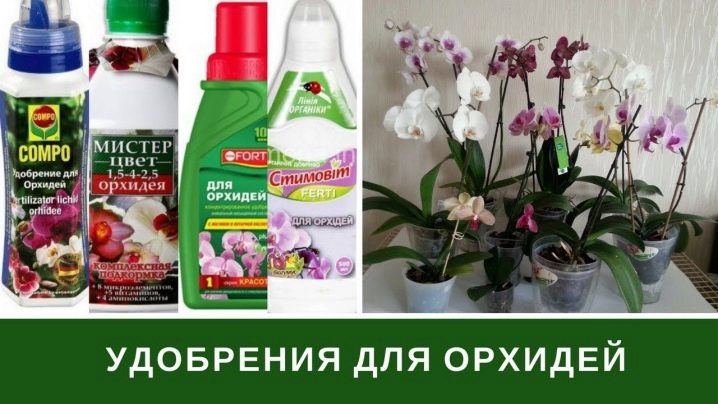
Another rule: the salts that are used for fertilization tend to concentrate in the substrate, and therefore it is important to rinse it with warm water once a month. Use a few more tips for fertilizing phalaenopsis from experienced growers:
- only healthy specimens with a stable root system and normal leaf turgor are allowed to be fed;
- during the flowering period, the plants cannot be fertilized, since this procedure speeds up the metabolism, respectively, the duration of flowering is significantly reduced;
- during the so-called dormant period, the culture will require feeding once every 2 weeks;
- for a month, you cannot fertilize a newly transplanted flower or a young, still weakened specimen;
- observe all proportions indicated in the instructions for use of the drug.
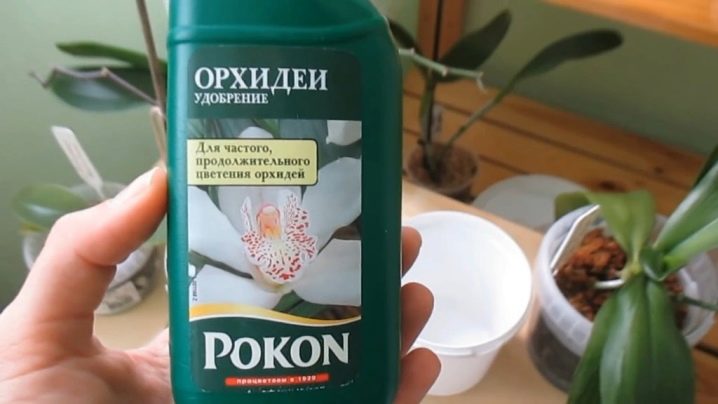
When choosing fertilizer for the blue variety in the store, give preference to the following products:
- "Dr. Foley" - due to the content of nitrogen and potassium, this mixture has a beneficial effect on the active growth of tissues and the general development of the plant;
- Forte complexes - the product contains phosphorus, which contributes to long-term and abundant flowering;
- biofertilizer "Mister Tsvet" is intended for the growth of leaves and roots, has a positive effect on the development of peduncles.
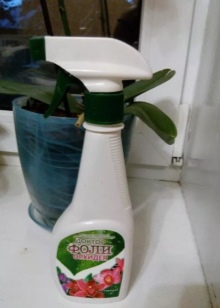

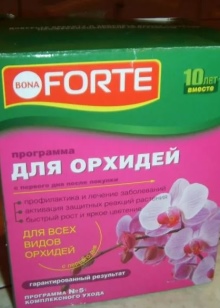
Watering
The watering mode is determined by the lighting. The more sun hits the plant, the more often it is watered. On average, it is recommended to moisten the soil once a week. In summer, the number of procedures should be increased to once every 4 days.
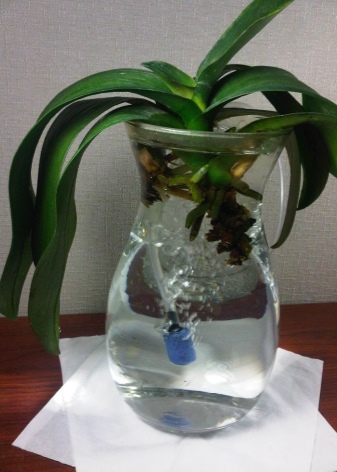
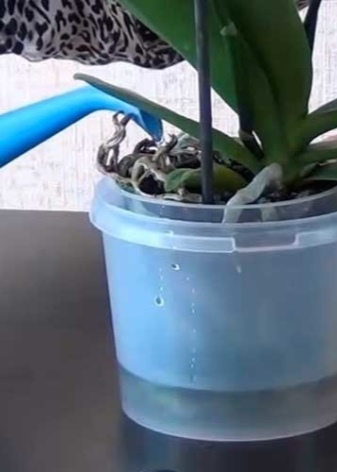
The flower needs watering if its leaves begin to change color or lose turgor. But it is also important to check the soil for dryness all the time. It is recommended to postpone the watering session in cases where condensation is observed on the walls of the pot. When the flowering period begins, it is best to reduce watering. In this case, the phalaenopsis will bloom much longer. For moisturizing, it is recommended to use boiled, settled or rainwater, such water is soft and will not harm the root system.
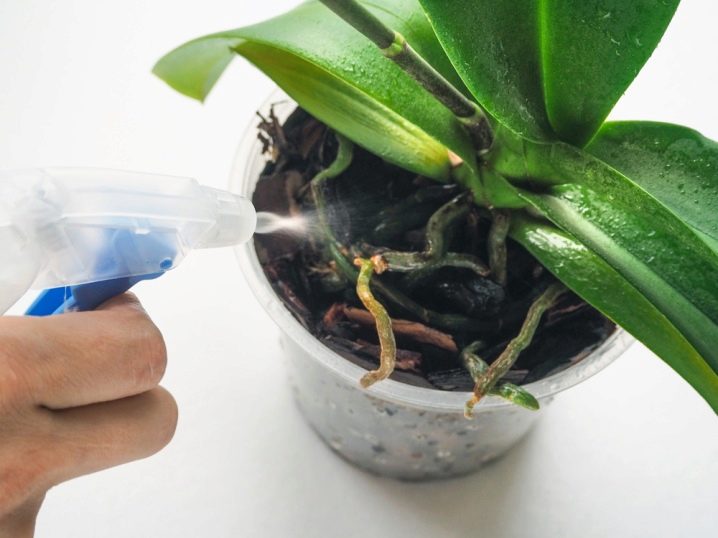
Many growers advise watering the plant using the immersion method. To do this, the entire pot, along with the flower, is lowered into a basin of water and left for a maximum of half an hour. Further, excess fluid drains through the drain. Another way is the so-called shower. The specimen is “bathed” under a weak pressure of water, after which they wait for excess water to drain, and carefully remove moisture from the sinuses, which can provoke decay - blue varieties are weakly resistant to putrefactive processes.
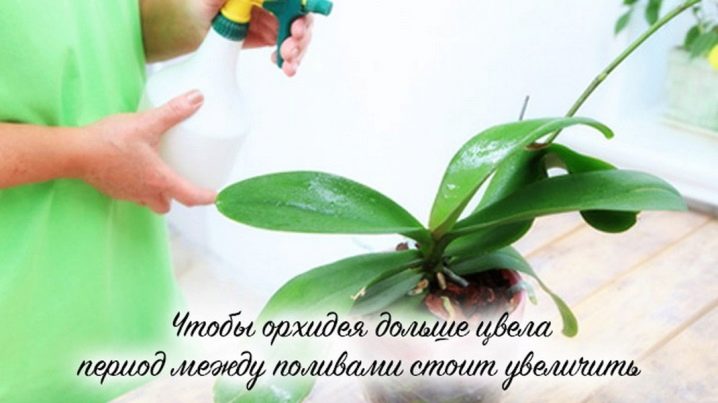
When growing blue species, it is important to maintain an appropriate level of air humidity. Household humidifiers, decorative fountains, wet towels hung next to the flower, or just a container of water placed next to it will cope with this task.
For information on how to care for blue orchids, see the next video.































The comment was sent successfully.